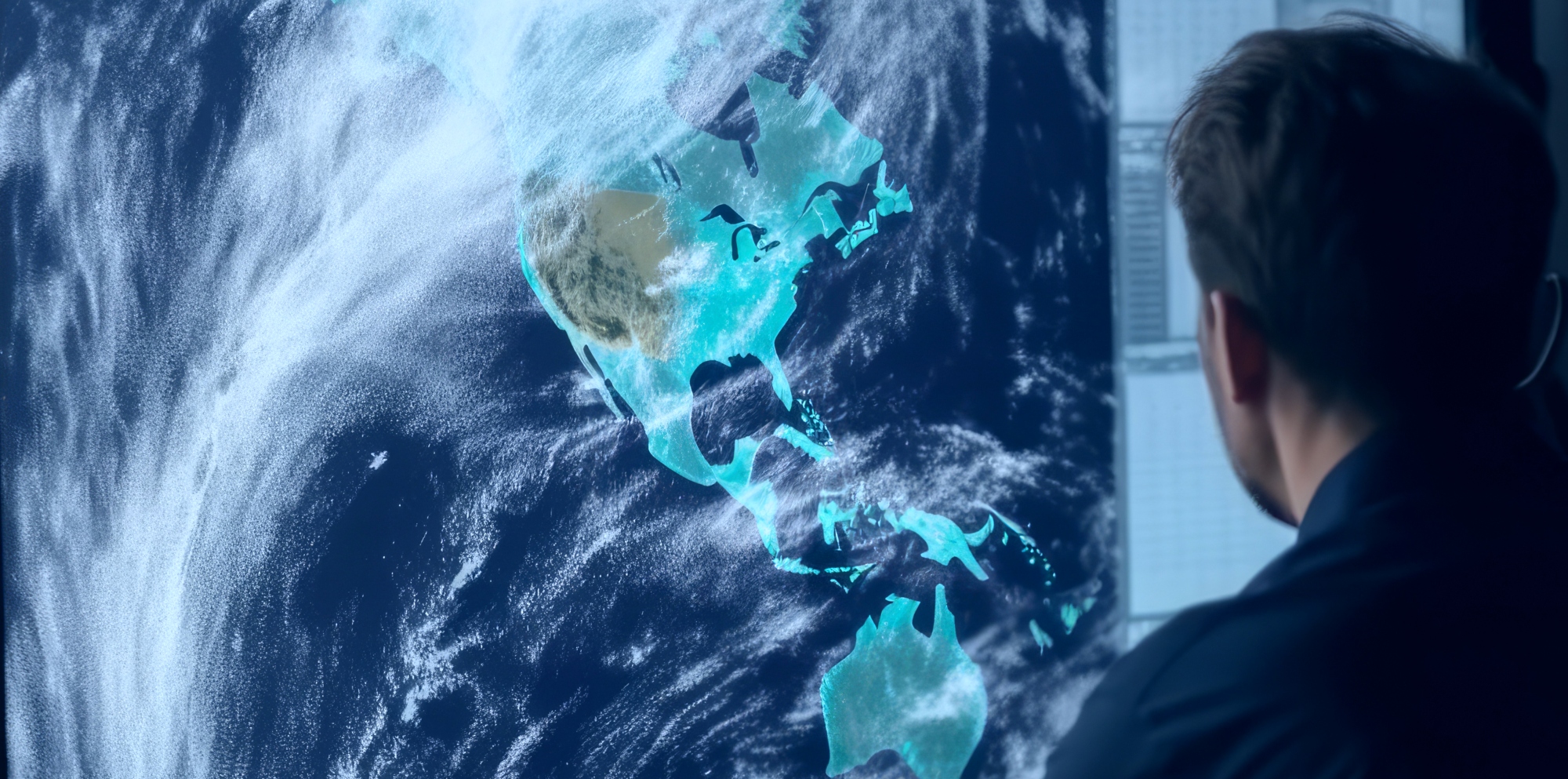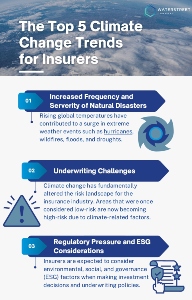The insurance industry, particularly Property and Casualty (P&C) insurance, has long been impacted by the effects of climate change. As the world grapples with the consequences of rising global temperatures and extreme weather events, the insurance sector faces both threats and opportunities.
It’s important for insurers to stay on top of today’s climate trends and seek reputable sources, such as McKinsey Research, Scientific American, NPR, CFR, and government climate data.
Climate Change Today
Climate change is a significant global issue. Intense shifts in the Earth’s climate patterns have led to several consequences, summarized by the US Forest Service.
Temperatures are rising globally, with a noticeable increase in both average and extreme temperatures. This warming trend is contributing to more frequent and severe heat waves, impacting ecosystems, agriculture, and human health.
Changes in precipitation patterns have led to more intense rainfall events in some regions and prolonged droughts in others. These shifts have profound implications for water resources, agriculture, and the frequency of extreme weather events such as floods, heat waves and wildfires.
There is a concerning trend of rising sea levels, primarily due to the melting of polar ice caps and glaciers and the thermal expansion of seawater. This rising sea level poses significant threats to coastal communities and ecosystems.
Trends for the Insurance Industry
1. Increased Frequency and Severity of Natural Disasters
One of the most significant trends affecting the insurance industry is the escalating frequency and severity of natural disasters due to climate change. Rising global temperatures have contributed to a surge in extreme weather events such as hurricanes, wildfires, floods, and droughts. According to climate change indicators by the Environmental Protection Agency, global temperatures have been steadily increasing, leading to more frequent and intense heat waves and storms.
The insurance industry faces higher claims payouts as a result of these disasters, leading to reduced profitability and potential solvency risks for some insurers. To mitigate these risks, insurance companies are reevaluating their underwriting practices, pricing models, and risk assessment tools. Additionally, reinsurers are playing a crucial role in spreading the risk, helping insurers manage the financial impact of climate-related catastrophes.
2. Underwriting Challenges
Climate change has fundamentally altered the risk landscape for the insurance industry. Areas that were once considered low-risk are now becoming high-risk due to climate-related factors. For example, coastal properties are increasingly susceptible to sea-level rise and storm surges, making it more challenging to underwrite policies for homes and businesses in these areas.
According to McKinsey, insurers are investing in advanced modeling and underwriting data analytics to better assess climate-related risks. Insurers are also exploring innovative solutions such as parametric insurance, which pays out based on predefined weather conditions rather than traditional damage assessments. These efforts aim to improve the accuracy of risk assessments and pricing models in a rapidly changing climate.
3. Regulatory Pressure and ESG Considerations
As awareness of climate change grows, regulators are imposing stricter requirements on the insurance industry. Insurers are expected to consider environmental, social, and governance (ESG) factors when making investment decisions and underwriting policies. Non-compliance can result in financial penalties and reputational damage.
According to the Council on Foreign Relations, regulatory pressure is pushing insurance companies to align their operations with sustainability goals. This includes divesting from fossil fuel investments, disclosing climate-related risks, and incorporating climate risk assessments into their business strategies. Insurers are encouraged to actively engage in climate mitigation efforts, such as promoting energy-efficient practices and supporting renewable energy projects. Many insurers are turning attention towards mitigating storm damages, such as wind mitigation, to help preserve building structures.
4. Premium Increases and Coverage Gaps
The rising cost of climate-related disasters and the changing risk landscape have led to premium increases in many regions. Policyholders have experienced higher insurance premiums, particularly in areas prone to hurricanes, wildfires, and coastal flooding. These premium hikes can create affordability challenges for many.
NPR has paid close attention to coverage gaps in the home insurance market. Some homeowners in high-risk areas may struggle to secure coverage altogether, leaving them exposed to significant financial losses in the event of a disaster. This issue has prompted discussions about government intervention and the need for affordable climate-resilient insurance solutions.
5. Transitions to Climate-Resilience
Many insurers are working on innovative solutions that promote sustainability and help policyholders adapt to a changing climate. This includes coverage for renewable energy installations, green building certifications, and climate risk consulting services.
As mentioned in Scientific American, insurance companies are investing in climate-related research and partnering with experts to better understand emerging risks. Insurers today are developing products that incentivize policyholders to adopt eco-friendly practices, such as offering discounts for energy-efficient homes or electric vehicles. Catastrophe Modeling brings together a plethora of data to help insurers take a proactive approach to extreme weather events.
Climate Change & Insurance
As climate change continues to shape the global landscape, the insurance industry must remain agile, innovative, and committed to sustainability to effectively address the evolving risks associated with a changing climate.
We’ve found that without a unified P&C insurance solution, insurers are unable to bring the variety of big data together for enhancing risk assessment. Third-party integrations are essential for many carriers to bring important and supportive data into the system. These integrations can help assess location risks, provide a history of weather patterns, offer more background information on a new policyholder, allow for self-inspections, and many other unique capabilities. WaterStreet Company solutions are built with a robust API to connect to any number of third-party integrations.
Reach out to WaterStreet Company today to request a consultation and demo.





